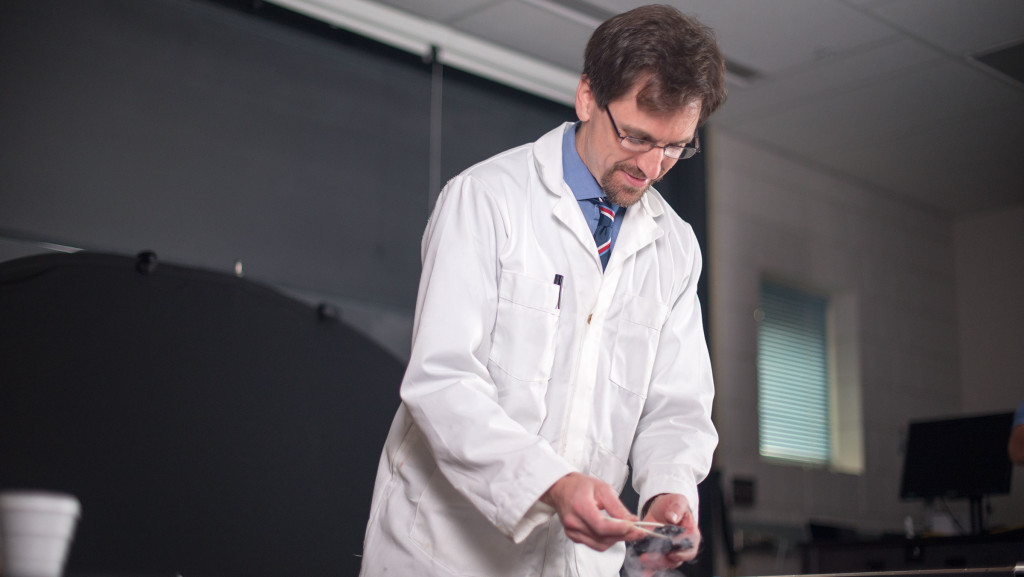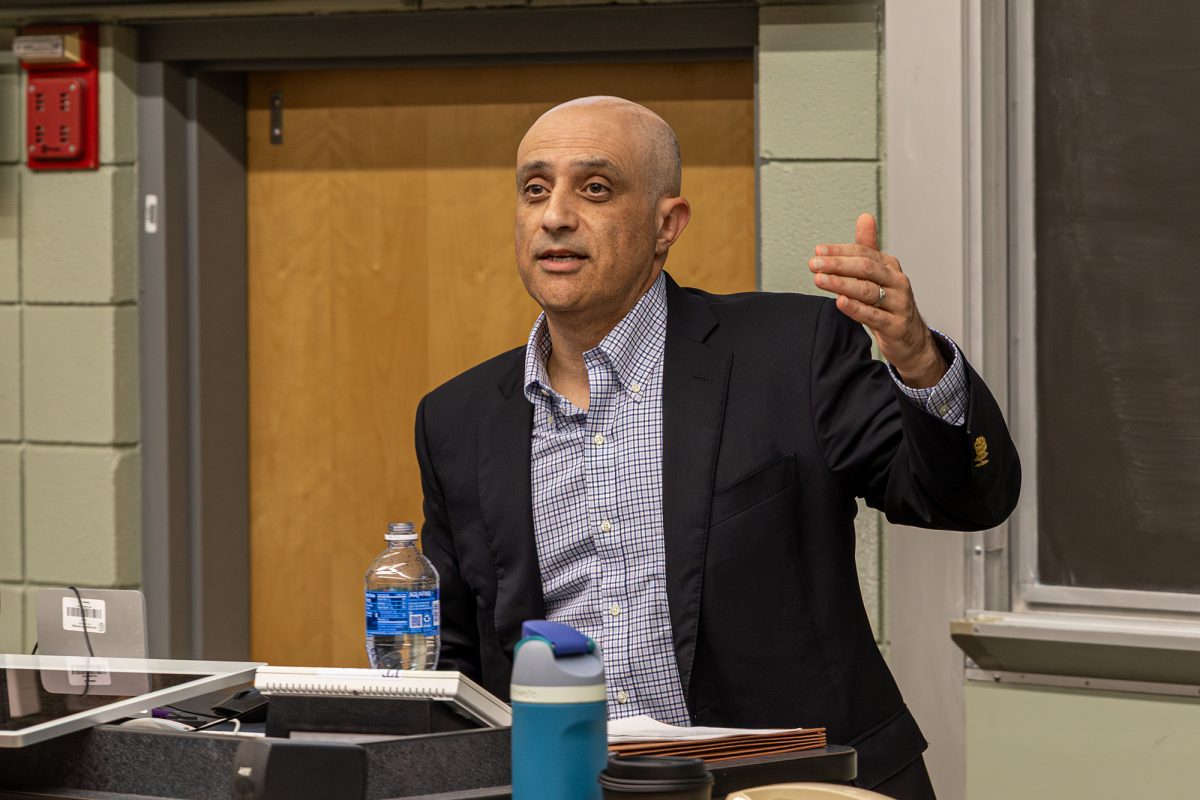Oct. 21, 2015, marked the day Doc Brown and Marty McFly visited the future in the movie “Back to the Future Part II.” The movie featured levitating hoverboards, flying cars and 3-D movies.
This vision of the future came partially true Oct. 21 at Ithaca College as an action figure of McFly floated through the air above a model of a graveyard as Professor Matthew Sullivan watched intently.
In honor of the movie, Sullivan and several of his students showed off levitating models of Marty on a hoverboard and of a jet-fueled DeLorean during an outreach event to a physics lab with three reporters, several students and a handful of photographers.
Sullivan, associate professor in the Department of Physics and Astronomy, researches superconductivity with students.
Sullivan speaks about himself as an “educator,” especially in regard to the research projects he gives his students to compose. In turn, he credits his students for the work they have done together over the years.
Senior Erin Jolley said Sullivan is a great educator.
“He teaches you to get things done, to get them done right,” Jolley said. “He’s got that knack for detail and wants it a certain way, and you realize what you gotta do and work with and how to do it correctly.”
Senior Connor Shea, another student of Sullivan’s, said he feels he has grown significantly as a student in the time he has been working with Sullivan. His passion for teaching and for the field as well as his outstanding work ethic have left lasting, inspiring impressions on Shea, he said.
“He’s good at pushing people, but not in a way where one would be intimidated I don’t think. He’s very approachable and very relaxed,” Shea said.
Sullivan’s interest in physics began his senior year of high school, when he took his first physics course.
“When I started taking physics in high school, it felt to me like all of a sudden I could understand how the world works,” he said. “You learn that when Shakespeare was writing, ‘I will be as constant as the northern star,’ actually the Polaris didn’t used to be right at the North Pole, it used to rotate around the North Pole, and we know that because of physics.”
Beyond the heavy science of the field of physics, Sullivan views the field as an important part of understanding the world we live in.
“When you’re in high school and college, you’re learning more and more about how we can explain and predict the world, the universe we live in extremely well … and it’s amazing what we can do,” Sullivan said. “Then the more and more you learn in physics, the more and more you start to realize all the things that we don’t know and can’t do and don’t understand.”
In 2011, Stephen Colbert invited Sullivan to “The Colbert Report” in order to prove that his flavor of Ben & Jerry’s ice cream was more futuristic than that of Jimmy Fallon by making his flavor levitate. Sullivan was impressed with the show’s speedy operation from start to finish, and described Colbert as a “science nerd.”
Sullivan is currently using a $185,000 grant from the National Science Foundation to work on superconductor levitation technology with students.
Both Sullivan and his students expressed their high value of student involvement on research. Sullivan said the superconductors and their tracks used during the levitation event were made almost entirely by students.
“It’s pretty surreal getting to do all this stuff,” Jolley said.
Sullivan said the research was meant to spread interest and encourage others to contribute and to learn.
“I’d prefer to have it everywhere instead of just for me,” he said.









